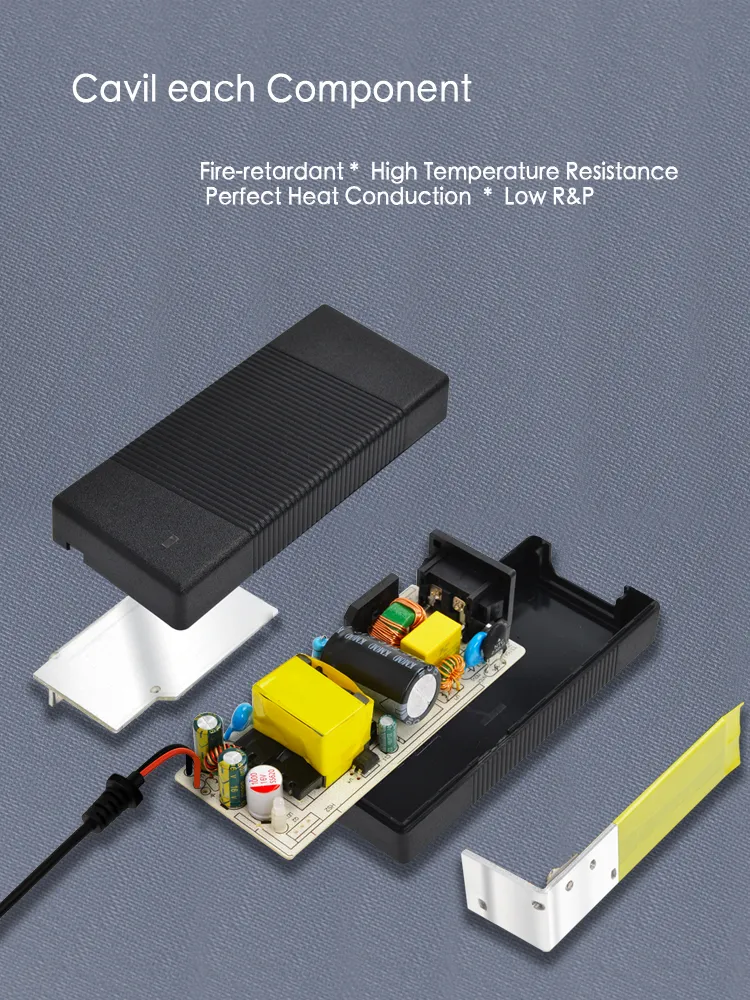Blog
what's the material of power adapter and what's the material characteristics
Views : 1078
Update time : 2023-05-16 16:18:14
A power adapter is a device that converts the power from a wall outlet into a form that can be used by a device. It is commonly used to charge or power electronic devices, such as laptops, tablets, and cell phones. The power adapter is made of a variety of materials, each of which has its own unique characteristics.
The most common material used in power adapters is plastic. Plastic is lightweight and durable, making it well-suited for a variety of applications. Additionally, plastic is relatively inexpensive, making it a cost-effective choice for many power adapters.
Copper is another common material used in power adapters. Copper is an excellent conductor of electricity, making it ideal for power adapters that need to transfer large amounts of electricity. It is also corrosion resistant, making it suitable for use in environments with high humidity. Additionally, it is relatively inexpensive, making it a cost-effective choice.
Aluminum is another material used in power adapters. Aluminum is lightweight, making it a popular choice for portable power adapters. Additionally, it has a high thermal conductivity, making it well-suited for applications that require efficient heat dissipation. However, aluminum is more expensive than plastic and copper, making it a less cost-effective choice
go on.
Silicon is another material used in power adapters. Silicon is lightweight and has excellent electrical insulation properties. Additionally, it is resistant to corrosion and can withstand high temperatures, making it well-suited for applications that require a high degree of safety. However, silicon is more expensive than plastic and copper, making it a less cost-effective choice.
Finally, rubber is another material used in power adapters. Rubber is an excellent insulator of electricity, making it ideal for use in power adapters where safety is a concern. Additionally, it is lightweight and durable, making it suitable for portable applications. However, rubber is more expensive than plastic and copper, making it a less cost-effective choice.
Overall, the material used in power adapters depends on the application and requirements. Each material has its own unique characteristics, making it well-suited for specific applications. Therefore, it is important to consider the material characteristics when selecting a power adapter.

The most common material used in power adapters is plastic. Plastic is lightweight and durable, making it well-suited for a variety of applications. Additionally, plastic is relatively inexpensive, making it a cost-effective choice for many power adapters.
Copper is another common material used in power adapters. Copper is an excellent conductor of electricity, making it ideal for power adapters that need to transfer large amounts of electricity. It is also corrosion resistant, making it suitable for use in environments with high humidity. Additionally, it is relatively inexpensive, making it a cost-effective choice.
Aluminum is another material used in power adapters. Aluminum is lightweight, making it a popular choice for portable power adapters. Additionally, it has a high thermal conductivity, making it well-suited for applications that require efficient heat dissipation. However, aluminum is more expensive than plastic and copper, making it a less cost-effective choice
go on.
Silicon is another material used in power adapters. Silicon is lightweight and has excellent electrical insulation properties. Additionally, it is resistant to corrosion and can withstand high temperatures, making it well-suited for applications that require a high degree of safety. However, silicon is more expensive than plastic and copper, making it a less cost-effective choice.
Finally, rubber is another material used in power adapters. Rubber is an excellent insulator of electricity, making it ideal for use in power adapters where safety is a concern. Additionally, it is lightweight and durable, making it suitable for portable applications. However, rubber is more expensive than plastic and copper, making it a less cost-effective choice.
Overall, the material used in power adapters depends on the application and requirements. Each material has its own unique characteristics, making it well-suited for specific applications. Therefore, it is important to consider the material characteristics when selecting a power adapter.



